
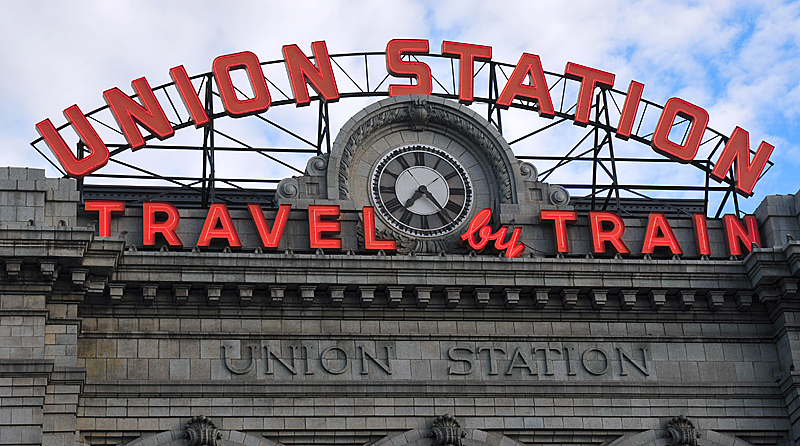





My grandfather taught me that if one wanted a good timekeeper, a railroad watch was the answer. It was also from him that I learned the mysteries of lever setting a watch.
Grandfather never worked for a railroad, but he carried a railway watch. It was normally at the end of a braded leather strap attached to his bibbed overalls. Grandpa was already old when I first knew him; he was born in 1873 -- the son of a Civil War veteran turned farmer.
In 1910 when Grandpa bought his 19 jeweled Burlington he was a farmer too, later he gave that up for carpentry. By the time I remember him he was mostly retired but still doing odd carpentry work and also sharpening saws for local carpenters. He also raised a wonderful garden each year and supplied us with an always full bin of home grown popcorn.
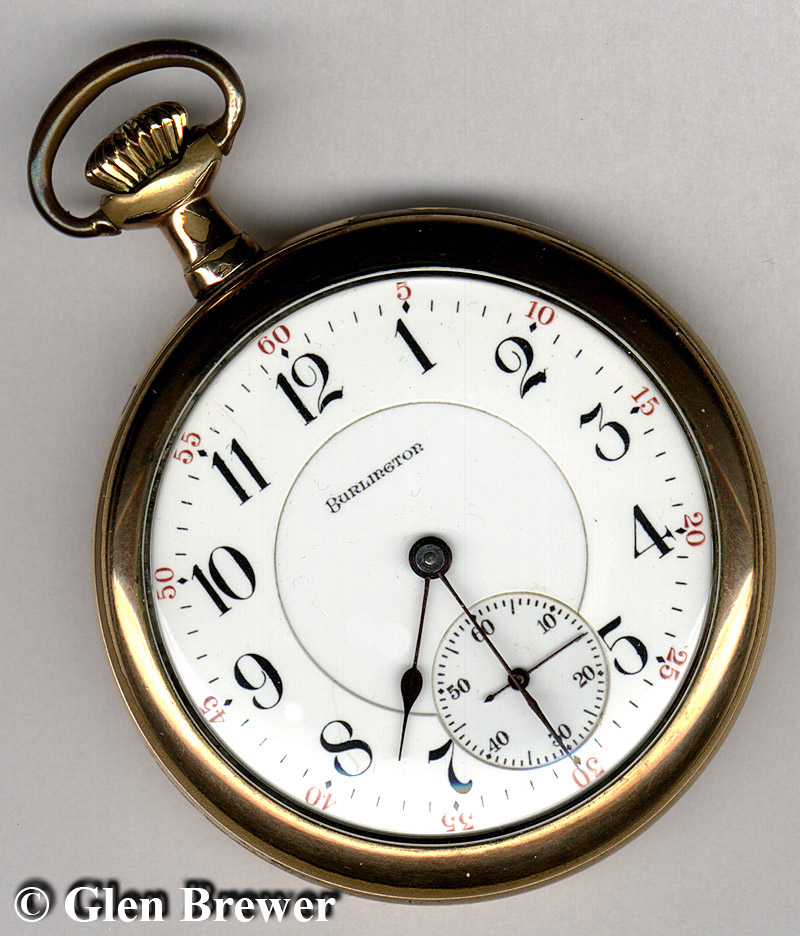
Nineteen-ten must have been a good year for my grandparents: grandfather also bought his first automobile that year, a little, red Brush roadster. Of course the car was only used in the summer months - those Illinois country roads were pretty bad in winter.
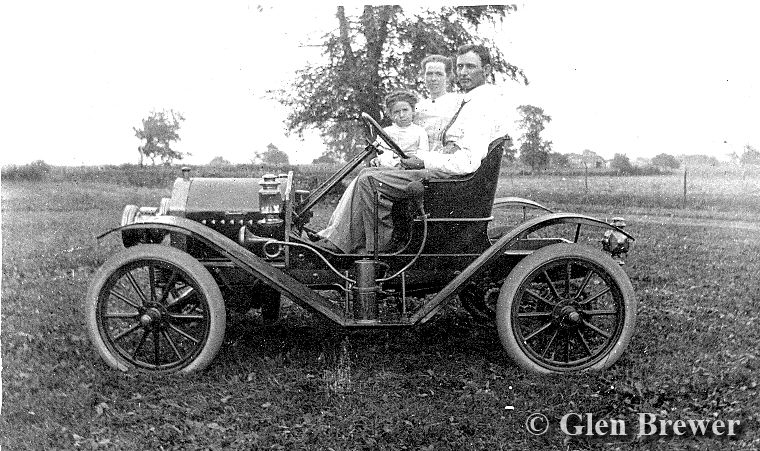
Burlington was a mail order firm, and I am sure that is how he acquired his watch. I wish I knew where he read the ad, perhaps the Chicago Tribune - he read that paper every day. Part of the deal was the engraving of his name on the back of the case. The watch originally had a fancy dial. He had occasion to send the watch back to Burlington for some repair, and when it was returned to him, it had the plainer double-sunk dial that it still carries.
When asked why he didn't wear a wristwatch, he replied that a wristwatch would never take all that hammering and sawing without breaking.
Despite having a railway watch, Grandfather, when I knew him, was not very concerned with the correct time. Once, after I had a watch of my own, I pointed out to him that his New Haven kitchen clock, which sat on a little shelf above the kitchen range, was twenty minutes off. Grandfather simply said, "That's close enough."
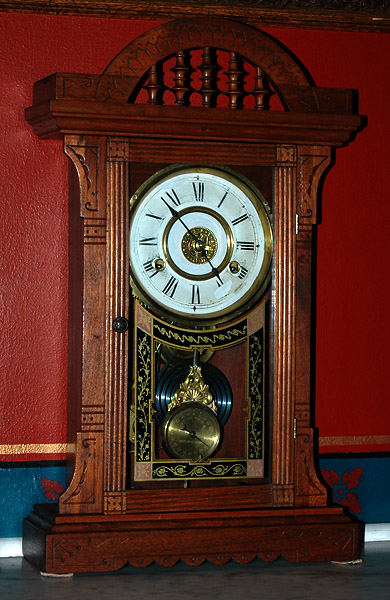
I learned at an early age that there was no use trying to argue with Grandpa. He had a lot of strongly held opinions, and nobody was going to change his mind about any of them. More than once he unscrewed the back and showed me the works of his Burlington. One time it occurred to me that the balance was moving pretty slowly. I suggested that maybe he should have it cleaned. Grandfather replied, "No dirt could get in there." End of conversation.
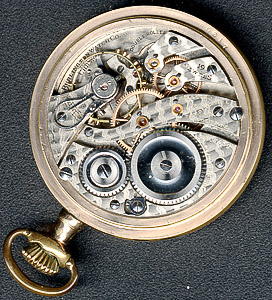
Grandfather had a cistern with a wooden box cover above and a hand pump. Water from this source was used for laundry and a stout rope with a rectangular, galvanized metal bucket at the end was lowered into it to keep milk and other things cool in the summer. One day Grandfather dropped his watch down that well. Undaunted, he pumped it out and went down after it. The watch was taken to a jeweler in an adjacent town and cleaned after which it served for many more years.
I suppose I was easly influenced. I was already a railway enthusiast with special interest in all things anachronistic about railroads of the day: steam, telegraph, passenger trains, and, yes, clocks and watches.
I remember the day when Grandfather handed me his watch. He simply said, "Can you use this?" By that time I had left home and was visiting. He had been living with my parents for awhile; he was 94 then.
An attempt to repair the watch by our local jeweler had resulted in erratic running. I looked up the nearest railroad watch inspector and took it to him after which it ran well. I then carried the watch myself for several years before moving on to other railway models.
The watch shows a little brass now. The case is marked, "The Burlington Watch Co guarantees this case to be made of two plates of solid gold over composition and to wear for 25 years". Since Grandpa carried the watch for 57 years before he handed it to me, I think the guarantee was fulfilled.
The most recently made, and the most practical RR pocket watches for everyday use, are the Hamilton 992b and the Elgin BWRaymond. You can find these and other older watches on ebay. Repair parts, especially for the named two above, can still be obtained.
At a time when the US led the world in the watch business, most US manufacturers had at least one RR model (Hamilton, Howard, Illinois, Waltham, Hampden, Elgin, ...).
A railroad man's watch was a precision tool, a requirement for employment and a big investment. Buying one before reporting for work the first day must have been quite a strain on finances.
Specifications for US RR watches varied a bit over the years and from road to road, but by mid 20th century were pretty much: US made, lever set, size 16, plain open face, wind at 12, arabic numerals, at least 21 jewels, double roller, micrometer regulator, adjusted to temperature, isochronism, and at least 5 positions. Most railroads by then simply listed acceptable makes and models.
As I said, standards changed over time: Grandfather's 19 jewel Burlington was acceptable at the time he bought it.
See also: Railroad Time